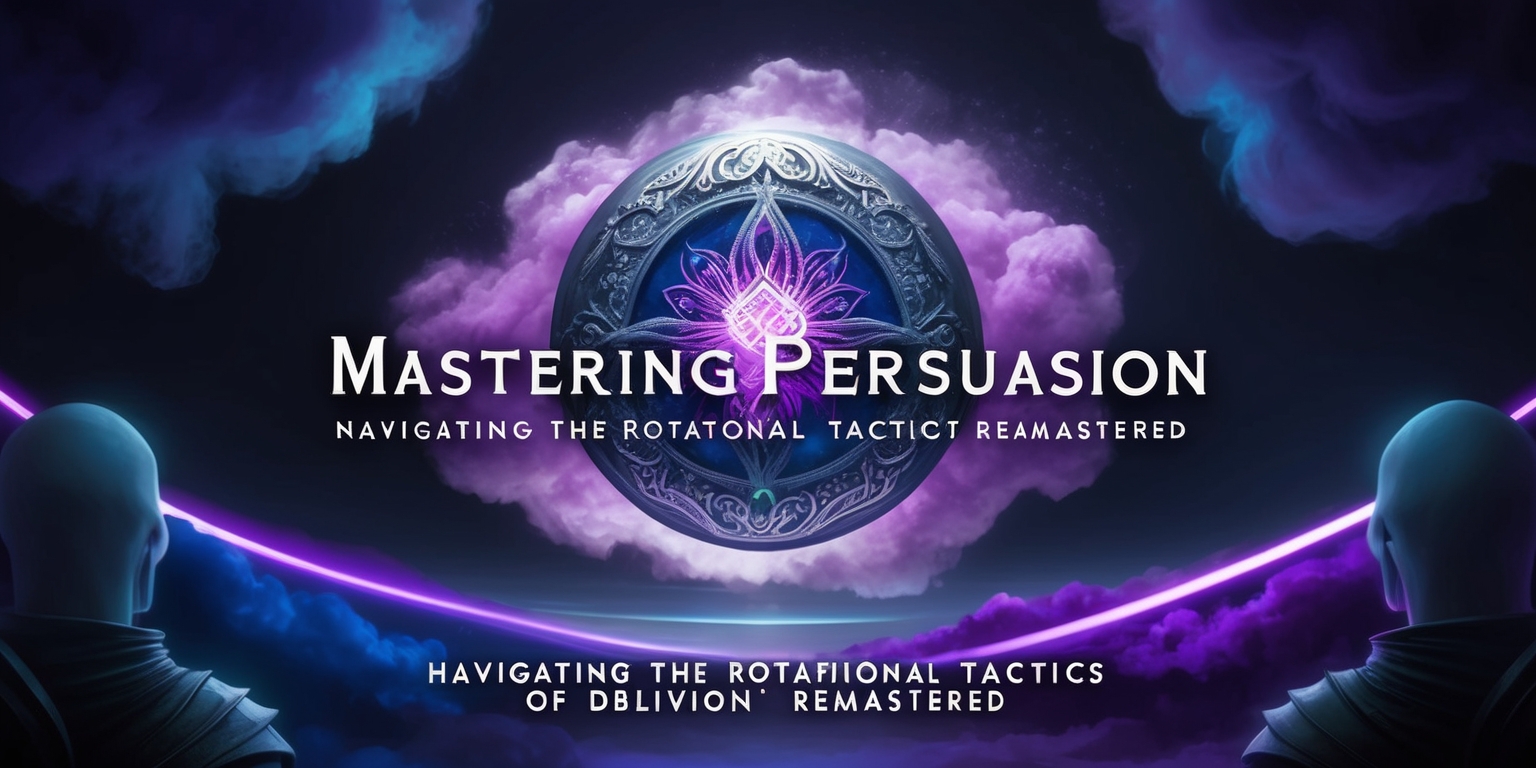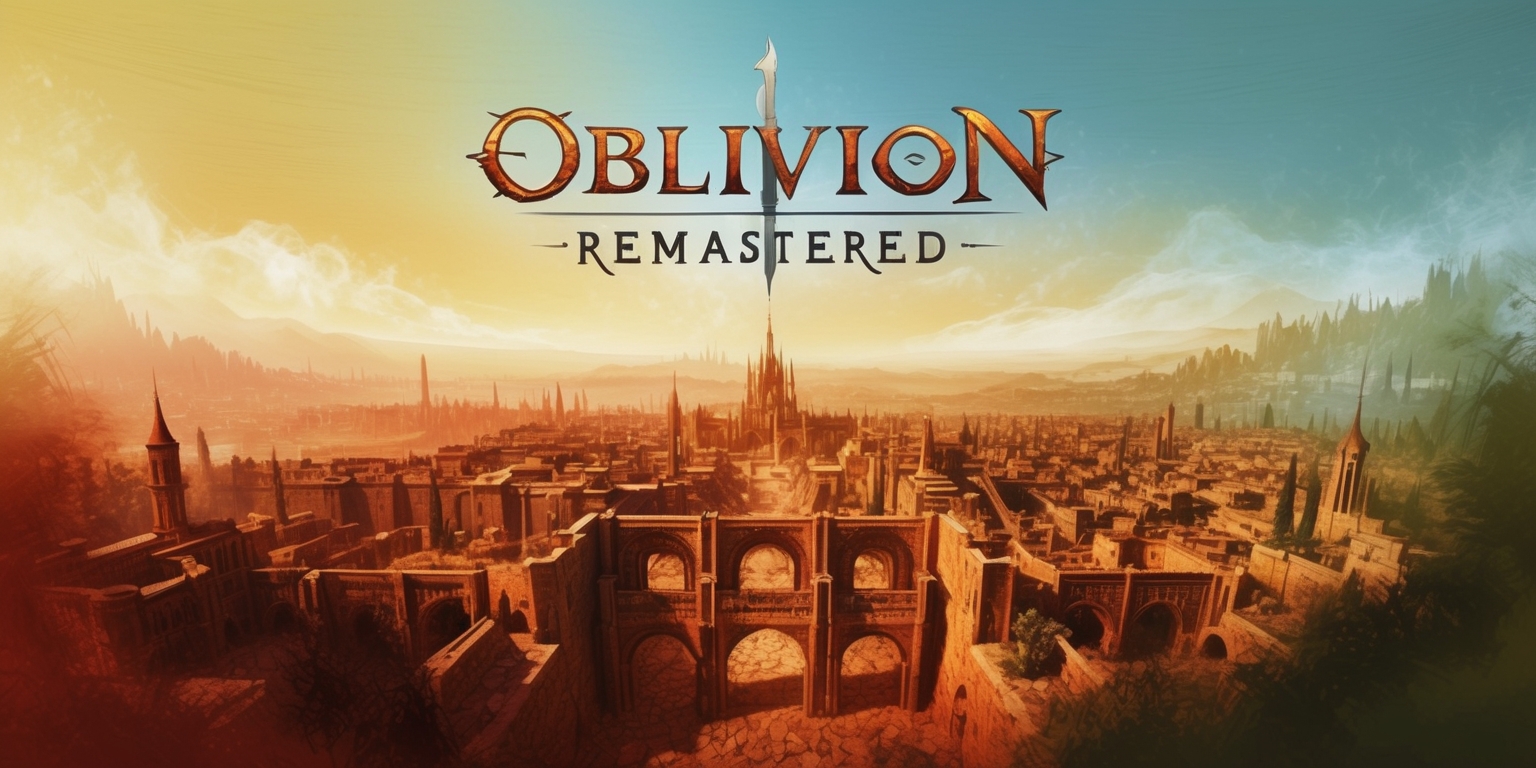Mastering Persuasion: Navigating the Rotational Tactics of Oblivion Remastered
- May-05-2025

The intricate systems built into Oblivion Remastered demonstrate the game's commitment to blending traditional role-playing elements with innovative gameplay challenges. One such element revolves around persuasion, a nuanced mini-game that compels players to engage in subtle dialogue manipulation. The mechanics may initially seem daunting, yet they encapsulate a predictable logic combined with elements of chance. Navigating through this facet of the game requires a deep understanding of character interactions, rapid decision-making, and efficient strategy formulation. Every choice presents an opportunity to influence a character's disposition while testing your grasp of underlying mechanics. The experience is as much about mastering the system as it is about diving deep into the universe's woven tapestry of stories.
Unraveling the Tactical Puzzle of Persuasion
The persuasion mini-game in Oblivion Remastered is designed to challenge the player's ability to manage a complex interplay of dialogue options and character sentiments. Each character presents a unique response pattern to four discrete actions, requiring players to quickly deduce whether to choose a positive or negative option. In this interactive puzzle, the goal is to align the selected action with the reaction of the recipient. The process involves reading both visual indicators and hints embedded in the interface. As the wedges that denote each option shift in fullness, players must stay alert to subtle cues that inform whether an option is favorable or not. The ordered sequence and rapidly changing dynamics encourage persistent observation, rewarding those who manage to balance both risk and timing.
The Art of Gauging Character Sentiments
At the heart of this mini-game is the evaluation of character disposition. Each individual in the game has a preset attitude toward the four available actions, ranging from affection to aversion. Visual cues such as emotive symbols illustrate whether a character feels positively or negatively toward a particular line of dialogue. Players can interpret these cues by hovering over each option, where graphical indications, like a pronounced smile or frown, provide insight into the character's inner feelings. The system not only challenges one’s ability to choose the correct dialogue but also interweaves narrative cues with gameplay mechanics. This integration ensures that every conversation becomes a strategic exercise, emphasizing the importance of understanding character backstories and personality traits.
Decoding the Rotational Mechanics
A defining feature of persuasion is its reliance on rotational patterns, where the positioning of action wedges plays a critical role. Each chosen action triggers a clockwise rotation of the diagram, complicating the decision matrix for the player. This rotating dynamic means that what looks like an optimum choice at one moment may be in a different position in the next. Furthermore, players with higher Speechcraft Skill levels are granted an additional rotation advantage, adding another layer to the strategy. Managing these rotations under pressure, while the disposition meter steadily decreases, requires both quick thinking and an intuitive grasp of spatial dynamics. The design underscores the balance between timing and tactical decision-making, ensuring each attempt is an exercise in both precision and adaptability.
Balancing Speed with Precision

The pressure of time is a key element in this challenge, as the character’s disposition begins to wane as the game progresses. When engaging in the persuasion mini-game, the constant tick-down of disposition emphasizes the need for rapid yet precise decisions. Every moment counts and delays can be detrimental, often leading to unfavorable dialogue outcomes with hostile responses. This heightened sense of urgency forces players to blend strategic insight with quick reflexes, making the experience both exhilarating and nerve-racking. The need to act quickly while simultaneously processing visual signals tests a player’s multitasking abilities. By limiting the window of time available for each decision, the game transforms what could be a straightforward interaction into an engaging, complex trial of wits.
Visual Cues and the Subtle Language of the Interface
The graphical presentation of the persuasion mini-game has been meticulously engineered to combine practicality with evocative. The use of ring indicators that change in size and color provides immediate feedback on a player’s choices. Green rings suggest a positive selection, while red hues serve as indicators of a potentially harmful decision; however, these color cues are not always present, adding to the challenge. Icons such as smiling or frowning faces act as additional layers of subtle communication, allowing even the most hurried players to gauge a character’s feelings quickly. The melding of visual art with gameplay mechanics not only elevates the immersion level but also serves as a dynamic tutorial, aiding players in understanding a complex system through intuitive design strategies that marry aesthetics with functionality.
Skill Ranks and Their Influence on Outcomes
Central to mastering the persuasion mini-game is the player's proficiency in the Speechcraft Skill. Higher skill ranks not only offer an extra rotation advantage but they also unlock subtler nuances in the interaction process. For instance, players at Apprentice rank or above gain insights that can expedite decision-making, thus mitigating the ticking clock of disposition. These ranks serve as both a reward for investment in character development and a tangible enhancement to gameplay strategy. It is through this skill improvement that the player can navigate layered dialogue scenarios more efficiently, capitalizing on the benefits of increased speed and precision. The integration of character development and gameplay makes the mini-game a robust learning experience, reflective of broader game mechanics that emphasize the importance of player progression.
Leveraging the Power of Detailed Observations
One effective approach emphasized in the mini-game is the importance of detailed observation. Instead of attempting elaborate predictions on where each wedge might land, experienced players opt for a more straightforward strategy: selecting actions based on the current visual state. This “quicker is better” method leverages the fuller rings for positive responses and the smaller rings for negative responses. Such a strategy minimizes the cognitive load by reducing the emphasis on potential future positions. By focusing solely on the present, every decision is made with a clear snapshot of character sentiment in view. The technique underscores the value of situational awareness, reinforcing that successful navigation isn't just about long-term planning but also about capitalizing on immediate visual feedback in high-pressure circumstances.
Adaptive Strategy in a Randomized Framework
Adding to the complexity, the mini-game incorporates elements of randomness to prevent repetitive outcomes. Each time a player initiates a persuasion attempt, the starting position of the action wedges is randomized. This design choice ensures that no two sessions are identical and that players must adapt their strategy with every encounter. The unpredictability of the wedge positions drives home the necessity of quick and adaptive problem-solving. This randomized element reinforces the principle that efficient persuasion requires both an awareness of established character biases and the flexibility to respond to a shifting interface. This unpredictability not only enhances replayability but also ingrains a deeper reliance on quick judgment and an understanding of the underlying system, ensuring that mastery is achieved through experience and adaptability.
Practical Techniques for Persuasion Success
Practical know-how is essential when confronting the persuasion system head-on. Many seasoned players advocate for a pragmatic approach that prioritizes the immediate state of the interface over theoretical optimum moves. Selecting a fuller wedge when a positive response is desired, or choosing a smaller wedge for a negative reaction, has proven effective in preserving a more favorable character disposition. This method reduces the risk associated with anticipating multiple rotations and helps to streamline decision-making. Instead of engaging in complex mental calculations, players are encouraged to lean on observable cues and act decisively. This efficient technique minimizes the chance of error under time constraints, making it a preferred tactic for players who seek to maintain control over challenging dialogue encounters in the game.
Impact on Overall Narrative and Game Interaction
The influence of successful persuasion extends far beyond isolated encounters, resonating deeply with broader game narratives. In Oblivion Remastered, achieving a high disposition with a character often translates into more favorable dialogue options, improved barter conditions, and reinforced alliances. The mini-game not only tests individual skill but also intertwines with the overarching story, where each persuasive victory can lead to new narrative pathways and unexpected interactions. This system enhances immersion, as players see a direct correlation between their adept management of dialogue and tangible narrative rewards. By merging mechanics with story, the game demonstrates how seemingly minor interactions can ripple outward, shaping experiences and altering future outcomes in the richly interwoven world of Cyrodiil.












